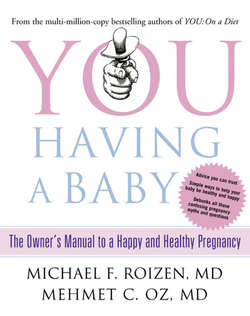Читать книгу You: Having a Baby: The Owner’s Manual to a Happy and Healthy Pregnancy - Michael Roizen F. - Страница 58
4 Growing to Extremes How to Make Sure Your Baby Isn’t Too Plump or Too Puny
ОглавлениеAt this moment in your life, we can guess what curves you’re likely obsessing about: your growing tummy, your fuller breasts, your figure in a maternity bathing suit. Now, though, is the time to shift gears and consider another kind of curve: the bell curve. We know, we know. Graphs and charts are about as compelling a topic as laundry detergent. But as we build on our discussion of nutrition from the last chapter, the classic bell curve helps make a vital point about how your baby’s weight in the womb will influence his lifelong health.
You already know how the bell curve looks and works. (See adjacent illustration if you need a refresher.) For whatever the given criteria, you have a small number at the two extreme ends and a big number in the middle; hence the bell shape. The traditional example: A school course that fits a bell-curve model would have a few students who earned A’s in a class, a few who got slapped with F’s, and the vast majority residing in the B, C, D world of the majority, the norm, the average. In pregnancy, the bell curve teaches us about what’s happening to your developing baby. Here’s the difference between the pregnancy model and the classroom one: The extreme ends of the bell curve don’t represent excellence and failure, as they do in the A and F example. Instead, your baby’s optimal grade rests right in the middle of the bell curve. Why? Because, at the risk of annoying our literature-teacher readers by adding a metaphor to a metaphor, Goldilocks was right about your baby’s size. You don’t want too big and you don’t want too small. You want just about right.
The fact is that even if you’re eating perfectly well and following all the guidelines for a safe pregnancy, something else could be causing your baby to receive the wrong amount of food—resulting in either undernutrition or overnutrition, both of which can put your baby at risk.
What’s at stake? For underdeveloped babies, there’s the risk that vital organs and tissues won’t develop enough to fully prepare them for life on the outside. For the plumper peeps? Too much baby fat can put both you and them at greater risk for developing complications from pregnancy. Why? For one thing, big babies raise your risk of stalled labor and cesarean section. For another, remember from chapter 1 that kids learn to forecast their future environments while in your belly. Not enough nutrition means they come to expect an environment of scarcity (there’s that thrifty phenotype again), thus sending the message that they should load up on Ding Dongs
